| Home | Nature Weekly Index |
24 January 2016 | Unknown Weedy Plant | Asteraceae (Sunflower Family) |
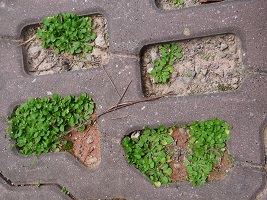
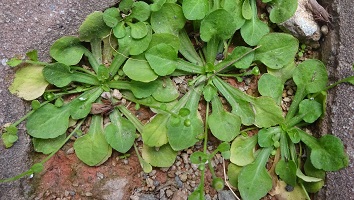 In the same carpark lots where I first spotted the
Hairy Crabweed (Fatoua pilosa)
back in June 2015, I discovered another new plant recently.
This unexpected discovery took place on 7 January while I was waiting for taxi at the carpark area. Like most carpark,
it was laid with turf grass block paving bricks or in short, turf pavers that had holes to allow grass to grow. With
nothing much to do during the wait, I started to survey the weedy plants that filled up the holes in these turf
pavers. A green patch of unfamiliar plant caught my attention. Soon, I found more of them around.
In the same carpark lots where I first spotted the
Hairy Crabweed (Fatoua pilosa)
back in June 2015, I discovered another new plant recently.
This unexpected discovery took place on 7 January while I was waiting for taxi at the carpark area. Like most carpark,
it was laid with turf grass block paving bricks or in short, turf pavers that had holes to allow grass to grow. With
nothing much to do during the wait, I started to survey the weedy plants that filled up the holes in these turf
pavers. A green patch of unfamiliar plant caught my attention. Soon, I found more of them around.
 Three days later, armed with a small trowel and container, I dug one back home and planted in my pot for closer
observation. Similar to most transplanted specimen, it showed signs of poor health with the rotting away of its leaves at
the base a few days later but did continue to survive till today. The one that I pull happen to have a few flower stalks
on it. Based on the appearance of the flowers, I was quite certain that it belonged to the
Sunflower family (Asteraceae).
Three days later, armed with a small trowel and container, I dug one back home and planted in my pot for closer
observation. Similar to most transplanted specimen, it showed signs of poor health with the rotting away of its leaves at
the base a few days later but did continue to survive till today. The one that I pull happen to have a few flower stalks
on it. Based on the appearance of the flowers, I was quite certain that it belonged to the
Sunflower family (Asteraceae).
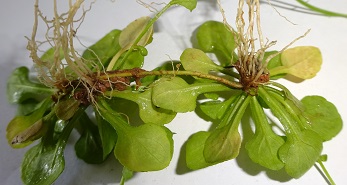 Yesterday, I collected another 2 plants from the open-air carpark lots to examine its root system. After clearing up the
soil on the roots with water, I saw a connected stem between the 2 plants. It meant that the plant also spread around via
runners or stolons, which are stems that run parallel to the ground and produce new plants along its length. With this new
lead, I continued my search on the identity of the plant. I had been searching for its identity for the past few
weeks but nothing came close. The closest I could get was an Antennaria species. However, its flower head or
capitulum arrangement was not the same as those from Antennaria species. Furthermore, the native range of
Antennaria species is the temperate regions of the Northern Hemisphere.
Yesterday, I collected another 2 plants from the open-air carpark lots to examine its root system. After clearing up the
soil on the roots with water, I saw a connected stem between the 2 plants. It meant that the plant also spread around via
runners or stolons, which are stems that run parallel to the ground and produce new plants along its length. With this new
lead, I continued my search on the identity of the plant. I had been searching for its identity for the past few
weeks but nothing came close. The closest I could get was an Antennaria species. However, its flower head or
capitulum arrangement was not the same as those from Antennaria species. Furthermore, the native range of
Antennaria species is the temperate regions of the Northern Hemisphere.
The diameter of the rosette leaves arrangement at the base of a mature plant was about 4 centimetres (cm) and the inflorescence sitting at the end of a long stalk was about 3 millimetres (mm) in height. The tiny dried fruit was about 1 mm long and attached with many feathery hairs called pappus at one end. Below were some features of this unknown plant:
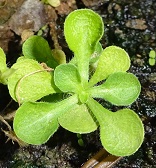
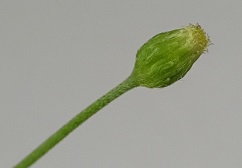
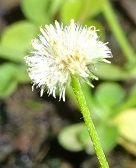
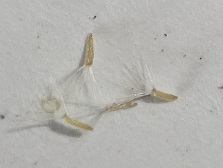
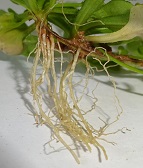
Update: 12 February 2017
In early March 2016, I thought that I had found a likely identity of this plant --- Bellis azorica but it was shown to be incorrect later after I eventually confirmed its identity about a year later in February 2017. It should be Erigeron bellioides (Bellorita).